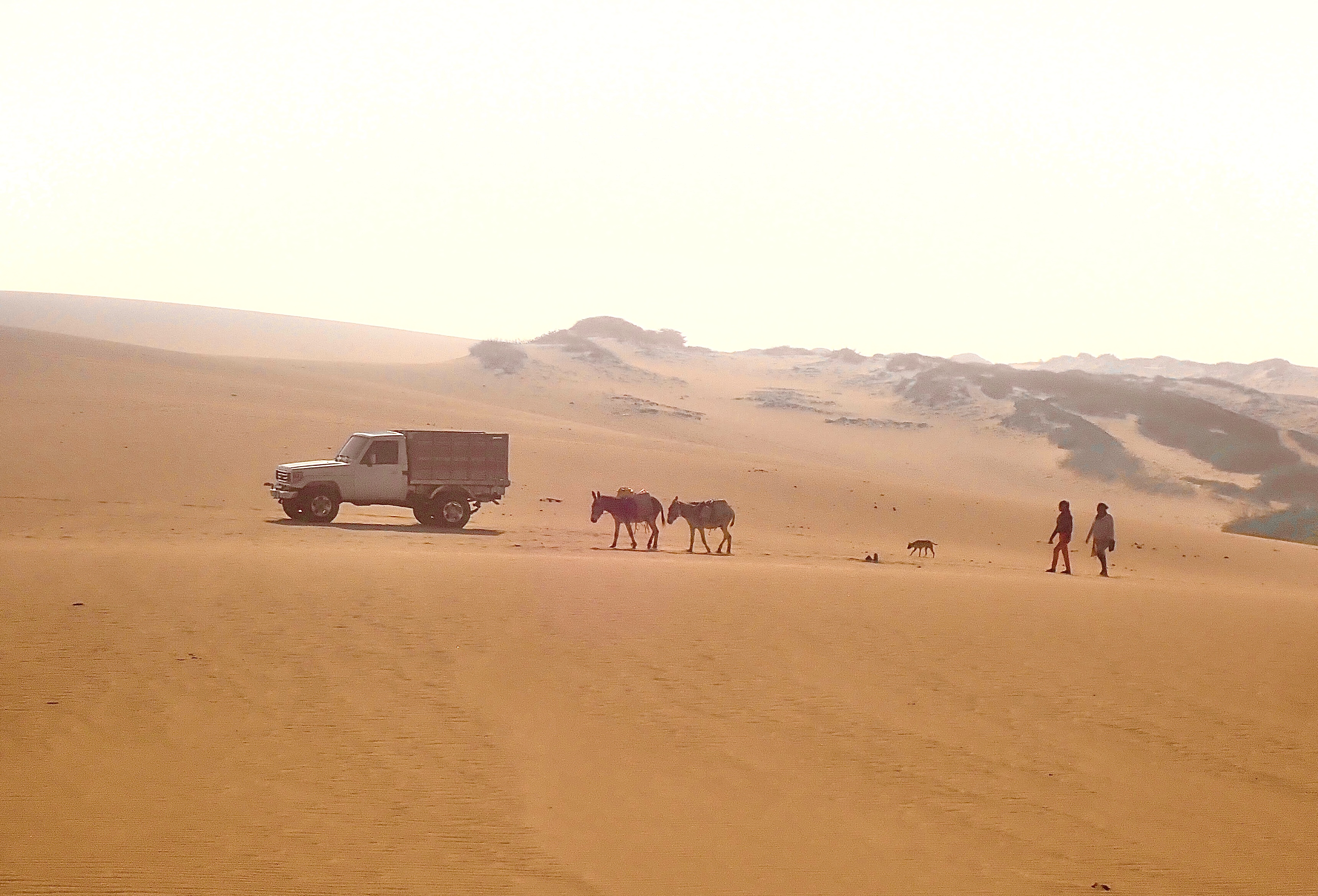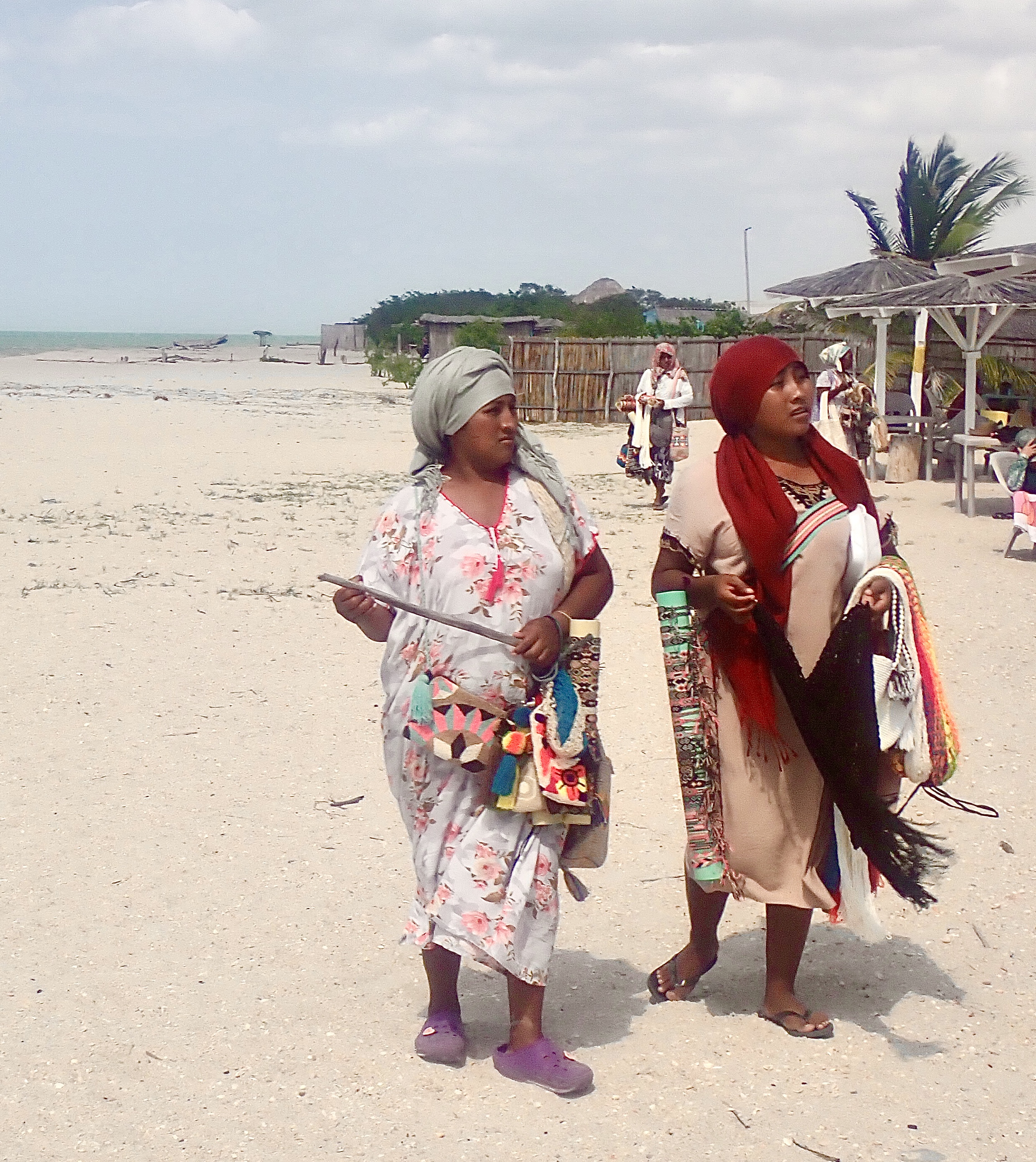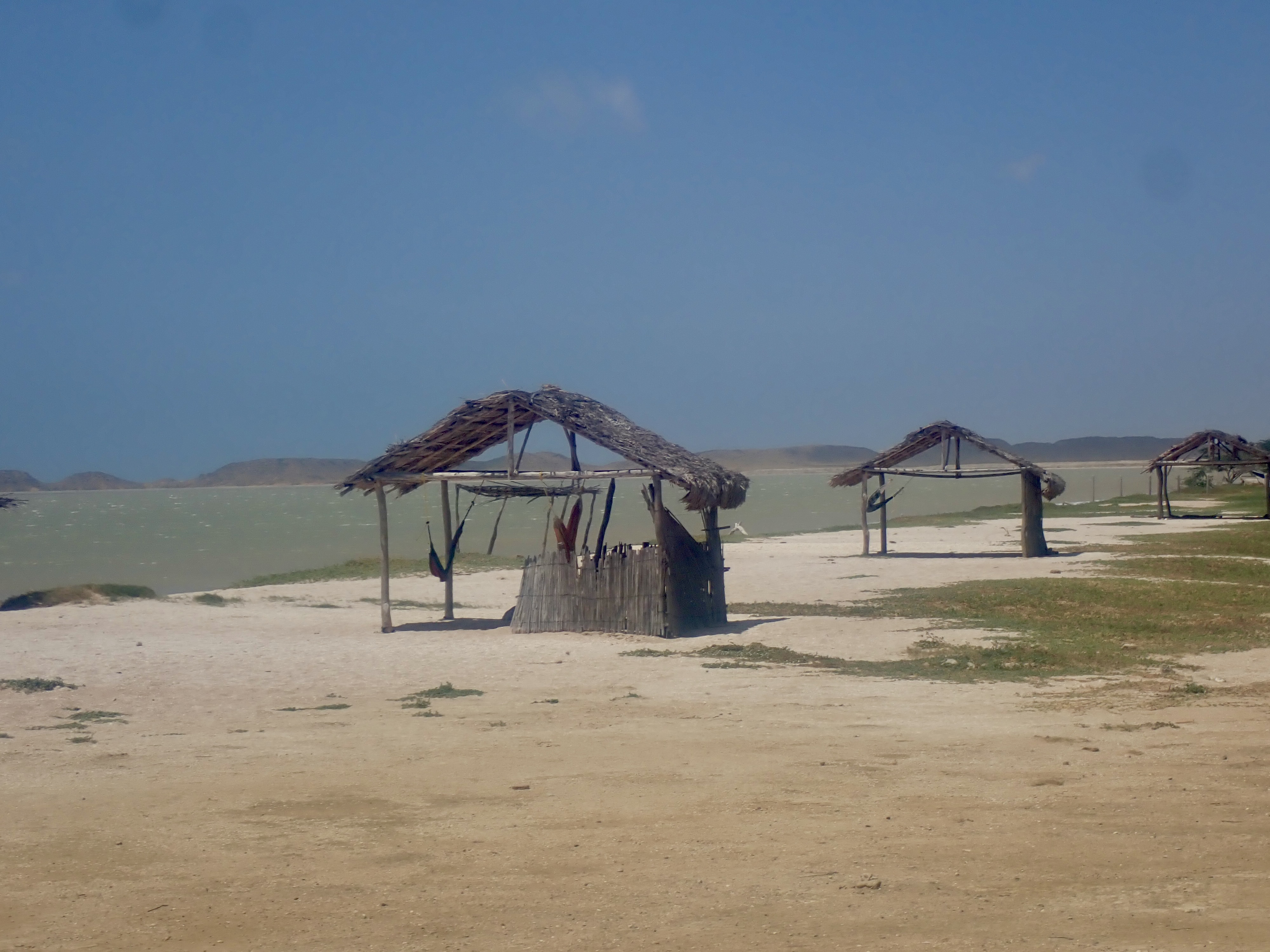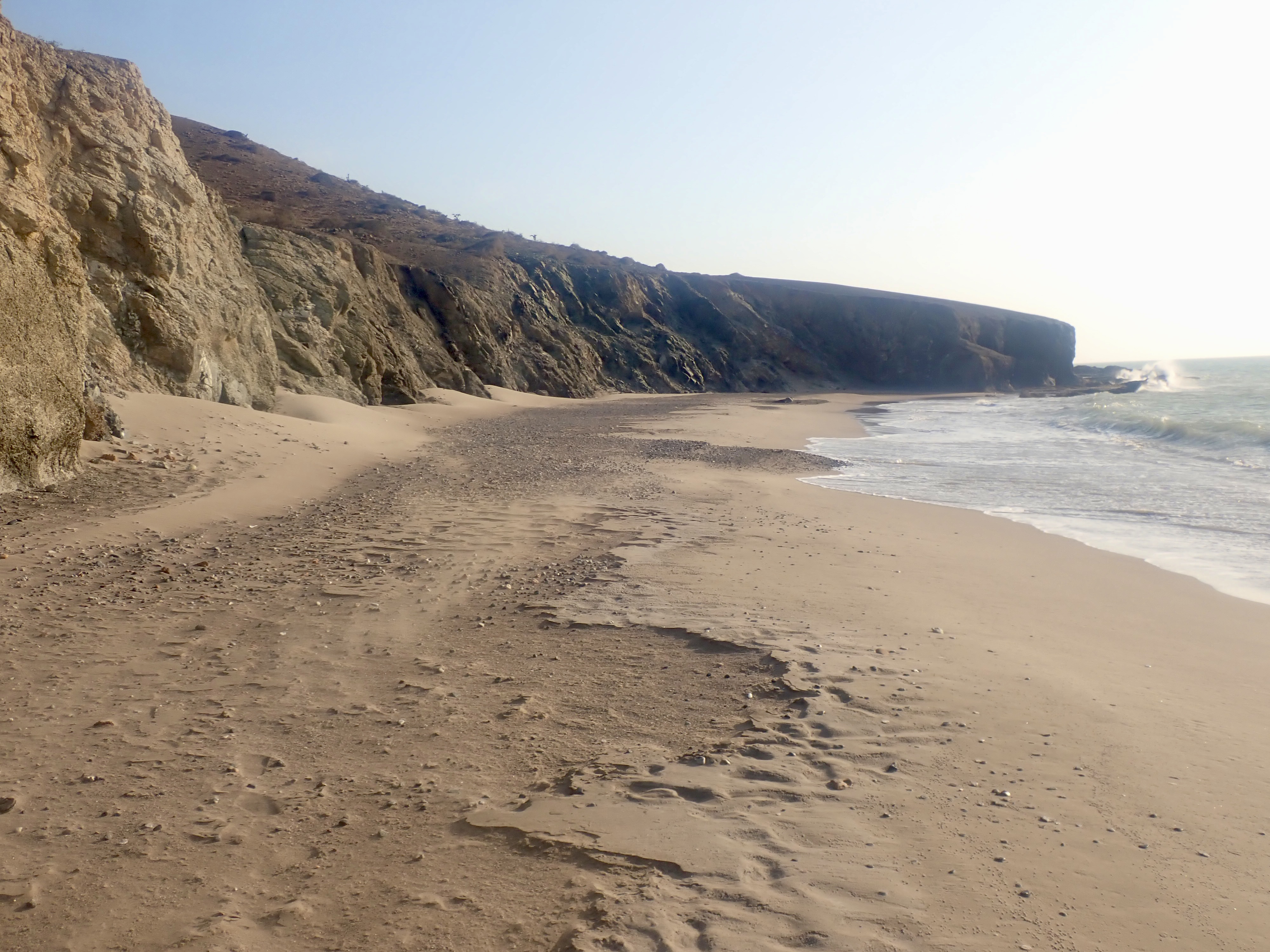Jon McInnes





La Guajira Peninsula in northerrn Colombia is one of the strangest and most spectacular spots I’ve ever seen in South American. Located at the northern most point of South America, bordering Veneuela,the Guajira peninsula is home to the Wayuu – a Colombian indigenous tribe, which politically rules the entire peninsula. It's an ancestral land where the sea and desert unite to form one of the most natural landscapes in the country.
It's one of most visually stunning places on earth where bare, desert landscape meets the blue turquoise of the Atlantic.
The trip is a must see if you are coming to Colombia. While not an easy trip, it is well worth the small sacrifice.
It is recommended one hire a tour guide from the Wayuu tribe. They all have air conditions jeeps. The trip technically could be done alone if you have a car. Colombians do it all the time. There is no public transportation past Cabo del la Vela. Foreign travelers should book a tour for safety reasons. Also the deset has no real roads and it would be easy to get lost. Tours can be easily arranged at any travel agency along the coast - from Cartagena to Santa Marta.

But it's cheaper to find a tour in the peninsula’s largest city and gateway to the Guajira Riohacha where for $165 one can find a three day tour of the Guajira Peninsula which includes : a guide who only speaks Spanish, meals mostly fish, from the sea, with options for chicken or goat, from the desert. And economical lodgings which are hammocks under thatched roof open-air huts on desolate Atlantic beaches. But for a n upcharge of $10 one can get a private room with bath.

There are no roads on the peninsula? Just Toyota four wheel jeeps banging across the dramatic desert landscape, following tire tracks laid down by jeeps and trucks before. They all drive Toyota's here. They make stops in the middle of nowhere where the desert meets huge, empty, Atlantic beaches – no lights, no internet, no cell connection - just lizards, buzzards, grazing goats, flamingos, cactus and the Wayuu people.


The first day we saw a sanctuary of flamingos and the salt flats of Manaure where they pump ocean water over desert flats creating salt from evaporating sea water. Fishermen hand flung fishing nets and fished for shrimp in still, beautiful bays.
We stopped for a swim at Pilon di Azuri a beautiful beach on a bluff with red dirt, white sands and volcanic rock. The second beach was Arcoinis or rainbow beach where a brisk hike up a wind swept mountain takes you to a statue of the Virgin Mary its peak.

is the last stop of day 1. It's the mosst visited destination in La Guajira and the easiest to get to. It's a little village on as beautiful still bay with a kite surfing school operating in the midst of Wayuu fishermen. Here there are plenty of bars and restaurants and hostels where you can rent a hammock in thatched roof huts or under lean-tos on the beach for the night.There are one day or two day tours to Cabo which is actually not that hard to get to. There are descent roads and public transportations. ( it's a four hour trip from the capital - Uribia).
Though most 2 day tours end at Cabo, the most scenic route is to continue up to the settlement of Punta Gallinas - a three day tour. Here lies the most beautiful part of the peninsula: beautiful bays like Bahia Hondita, Azucar beach (Sugar Beach) and Arconis Rainbow beach.




Punta Gallina
We spent the night in Punta Gallina at the Hospedaje y Restaurant Luzmila where we would spend two nights. We were assigned our hammocks and treated to a wonderful fish and lobster dinner. And the last night before dinner we took off for the lighthouse to see the sunset.
Being a desert - water is at a premium here. But they know how to find wells in the desert. How? First someone in the village has a dream, then they go and dig for water at the spot he or she saw in the dream.
Then there are solar panels to power pumps that pull the water from the wells. The water is free for all in the tribe. People haul water around in the back of trucks and in plastic urns tied on the sides of donkeys


The Wayuu are physically small in stature. The men only 5’ tall, the women shorter. They are stoic - answer questions with grunts and like to watch your every move. There is no private property for the Wayuu. It's a matriarchal society. The women hold the political power, their families run the clans. If a family wants to move his or her house they go to the mother’s clan, get approval and just move their house to another spot. The mother’s clan is responsible for solving all conflicts.
The landscape is barren reminding me of Carlos Castaneda books, the deserts of North Mexic0. But there is a stark peace to the arid landscapes and star filled skies – simple, seemingly lifeless, infinite.

The people living here are poor but scratch out a living from their environment through fishing, tourism, weaving hand bags, goat farming, salt, coal mining and contraband. The Colombian government doesn’t seem to care or do much for the Guajira reservation. But the Wayuu seem happy living well outside the box - leaving things the way they are and for them, the way things should be.

It was a long day trip back across the desert. It was a Saturday and there were kids all over putting ropes across the road to stop your car so they could come up and ask for money. We soon depleted our stash of candy and cookies to give them. Towards late afternoon we arrived at the town of Urbia, - the largest town and the indigenous capital city of Guijara and stopped at the market.


(For more on the top beaches of Colombia see the following articles:)
Santa Marta and the beaches north
Traveling Bahia Solano, El Valle and Colombia's Pacific Coast
Capurgana and Zapzurro - Carribean beach villages on the Darien Pass
